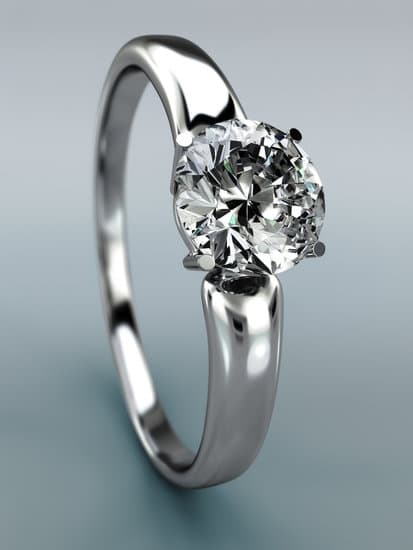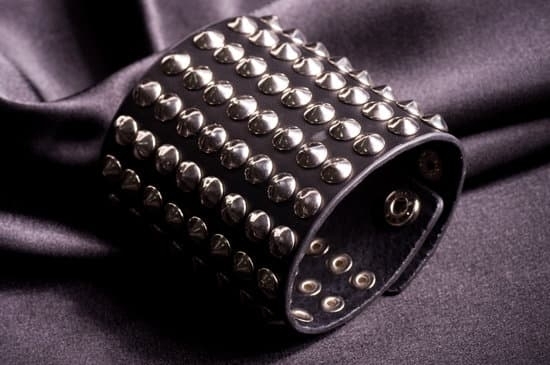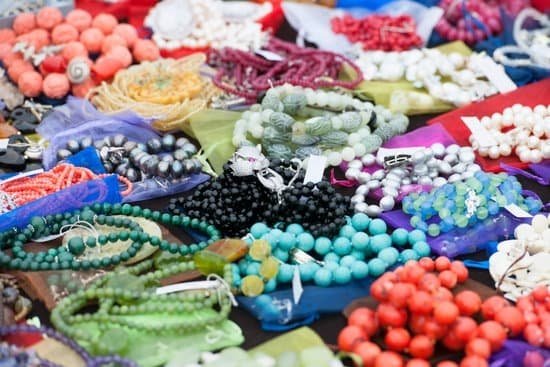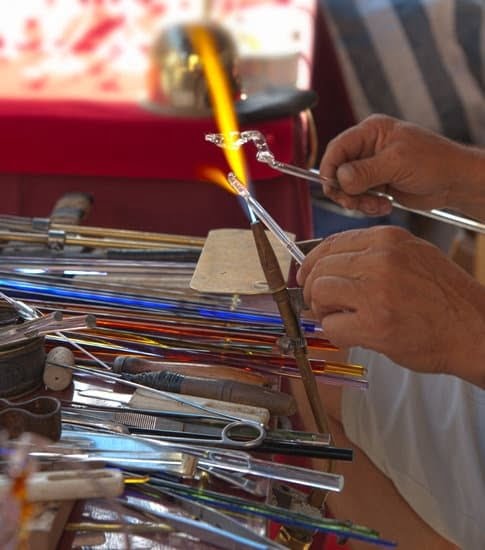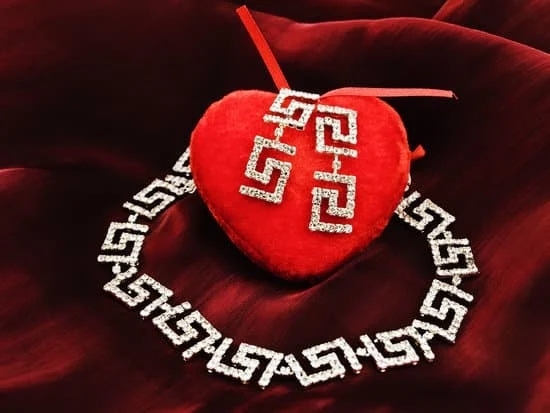The history of signed art jewelry traces back to ancient times, showcasing the evolution of techniques, materials, and designs that have shaped the world of artisanal adornment. From the early civilizations to modern-day art movements, the craft has continued to captivate enthusiasts and collectors alike with its intricate details and cultural significance.
This article aims to delve into the rich history of signed art jewelry, exploring its origins, techniques, notable artists and designers, role in fashion and culture, as well as its value and collectibility from antique to contemporary pieces.
Art jewelry has a long and storied history, with its roots tracing back to ancient civilizations such as Egypt, Greece, and Rome. Throughout the centuries, the craft has evolved alongside advancements in technology and artistic expression.
The use of signatures in art jewelry has also undergone significant changes from antiquity to contemporary times. From symbolic marks on ancient artifacts to engraved signatures on modern creations, understanding the evolution of signatures in art jewelry offers insight into the historical context of each piece.
As we journey through this exploration of signed art jewelry throughout history, we will also delve into the techniques and materials used in creating these exquisite pieces. Additionally, we will examine how historical events and movements have influenced signed art jewelry design over time. Lastly, we will discuss trends, innovations, and collecting tips for enthusiasts as we consider the future of signed art jewelry in today’s ever-evolving artistic landscape.
The Evolution of Signatures in Art Jewelry
Signatures in art jewelry have a rich and intricate history that dates back to ancient times. The act of signing one’s work is a way for artists to stamp their unique identity onto their creations, and it has evolved over time.
In ancient civilizations, such as Egypt and Mesopotamia, jewelry makers often used distinctive marks or symbols to identify their pieces. These early signatures were not only a form of artistic expression but also served as a mark of authenticity and quality.
As time progressed, the practice of signing art jewelry became more formalized during the Renaissance period in Europe. Goldsmiths and jewelers began using engraved signatures or maker’s marks on their works to indicate the artist or workshop responsible for creating them. This tradition continued to evolve during the Art Nouveau and Art Deco movements, with renowned designers such as René Lalique and Cartier leaving their distinctive marks on their exquisite jewelry pieces.
In modern times, signed art jewelry has become highly sought after by collectors and enthusiasts. Notable contemporary designers like Elsa Peretti for Tiffany & Co. and Paloma Picasso have continued the tradition of signing their work, adding prestige and value to their pieces.
Signatures in art jewelry have transitioned from being a symbol of craftsmanship and quality to becoming an integral part of its artistic value as well. Today, signed art jewelry continues to reflect the individual creativity and innovation of its creators while maintaining a link to its rich historical roots.
- The use of distinctive marks or symbols
- Engraved signatures during the Renaissance period
- Signatures as an integral part of artistic value
Notable Artists and Designers in Signed Art Jewelry History
Throughout history, there have been several notable artists and designers who have made significant contributions to the world of signed art jewelry. One such artist is René Lalique, a French designer known for his Art Nouveau and Art Deco jewelry.
Lalique’s use of innovative materials like glass and horn, as well as his unique approach to incorporating natural motifs into his designs, revolutionized the world of jewelry making. His impact can still be seen today, as many contemporary jewelry artists draw inspiration from Lalique’s work.
Another influential figure in the history of signed art jewelry is Suzanne Belperron, a self-taught French designer who rose to prominence in the 20th century. Belperron was known for her bold and unconventional designs, often using large gemstones and non-traditional materials in her pieces. Her work challenged the conventions of traditional jewelry design, paving the way for a new era of innovative and boundary-pushing art jewelry.
In addition to individual artists, there have also been influential design houses that have left their mark on the history of signed art jewelry. For example, the House of Cartier has been a driving force in the evolution of signed art jewelry since its founding in 1847.
With iconic pieces like the Cartier Panther brooch and the Tutti Frutti collection, Cartier’s designs have become synonymous with luxury and sophistication. The house’s commitment to craftsmanship and innovation has solidified its place in the pantheon of art jewelry history.
| Notable Artist/Designer | Impact |
|---|---|
| René Lalique | Revolutionized jewelry making with innovative materials and natural motifs |
| Suzanne Belperron | Challenged traditional conventions with bold and unconventional designs |
| House of Cartier | Synonymous with luxury and sophistication; commitment to craftsmanship and innovation |
The Role of Signed Art Jewelry in Fashion and Culture Throughout History
Historical Significance
Throughout history, signed art jewelry has played a crucial role in fashion, symbolizing wealth, status, and style. From ancient civilizations to the modern-day, jewelry has been used to adorn oneself for various reasons – from religious rituals and ceremonies to personal adornment and self-expression. The use of precious metals and gemstones in signed art jewelry has often been a reflection of the economic prosperity or decline of certain periods in history.
Cultural Impact
In addition to its historical significance, signed art jewelry has had a profound cultural impact. Different cultures have their own unique styles and techniques when it comes to creating art jewelry. For instance, the Art Nouveau movement in the late 19th century led to the creation of nature-inspired jewelry pieces that were both intricate and symbolic. In contrast, the Art Deco period in the 1920s and 1930s brought about geometric designs that reflected the modern age.
Fashion Influence
Signed art jewelry has also left an indelible mark on fashion through the ages. Jewelry trends have often been influenced by prominent figures such as royalty, celebrities, and influential personalities. For example, during the Renaissance period, elaborate gemstone-studded pieces were popular among European nobility. In more recent times, iconic jewelry designers like Coco Chanel and Elsa Schiaparelli revolutionized fashion by incorporating bold and unconventional designs into their creations.
The Value and Collectibility of Signed Art Jewelry
Signed art jewelry holds significant value and collectibility, ranging from antique to contemporary pieces. Collectors and enthusiasts of art jewelry are drawn to the unique history, craftsmanship, and artistic expression that comes with signed pieces. This section delves into the value and collectibility of signed art jewelry, highlighting the factors that contribute to their allure and worth.
Antique Signed Art Jewelry
Antique signed art jewelry holds a special place in the hearts of collectors due to its historical significance and rarity. Pieces from renowned artists and designers such as Louis Comfort Tiffany, René Lalique, and Georg Jensen command high values at auctions and are sought after by collectors worldwide. The craftsmanship, quality materials, distinct designs, and the provenance of these pieces contribute to their high value as prized possessions.
Contemporary Signed Art Jewelry
In recent years, there has been a growing appreciation for contemporary signed art jewelry. Emerging artists and designers are creating innovative pieces that push boundaries in terms of materials, techniques, and conceptual design. Collectors are drawn to these contemporary pieces for their uniqueness, artistic merit, and potential future value as they gain recognition within the art jewelry community.
Factors Affecting Value
The value of signed art jewelry is influenced by various factors such as the artist or designer’s reputation and legacy, rarity of the piece, significance within a specific artistic movement or period, condition of the piece, materials used, craftsmanship, and market demand. Additionally, pieces with documented provenance or association with historical events may command higher values due to their unique story and connection to the past.
Whether antique or contemporary, signed art jewelry continues to be cherished for its intrinsic beauty as well as its cultural and historical significance.
Techniques and Materials Used in Creating Signed Art Jewelry
Art jewelry has a rich and diverse history, with techniques and materials playing a crucial role in shaping its development. From ancient times to modern day, artists and designers have utilized a wide range of materials and techniques to create stunning pieces of signed art jewelry.
One of the most notable techniques used in creating signed art jewelry is metalworking. Metalworking encompasses various processes such as forging, casting, soldering, and etching, which allow artists to manipulate metals like gold, silver, copper, and brass to bring their designs to life. Additionally, enamelwork has been a popular technique in creating colorful and intricate designs in art jewelry. This involves fusing powdered glass onto metal surfaces through a high-temperature firing process.
In terms of materials, gemstones have always been highly coveted in the creation of signed art jewelry. Precious stones such as diamonds, rubies, sapphires, and emeralds are often incorporated into designs to add sparkle and color. Additionally, organic materials like pearls, coral, and ivory have been historically utilized in art jewelry creation. Artists often combine these materials with precious metals to produce one-of-a-kind pieces that showcase both creativity and craftsmanship.
Another important aspect of creating signed art jewelry is the use of innovative contemporary materials such as polymer clay, resin, acrylics, and alternative metals like titanium and stainless steel. These non-traditional materials offer artists new opportunities for experimentation and expression in their designs.
| Techniques | Materials |
|---|---|
| Metalworking: forging, casting | Gemstones: diamonds |
| Soldering | Rubies |
The Influence of Historical Events and Movements on Signed Art Jewelry Design
The history of signed art jewelry is closely intertwined with the influence of historical events and movements on design. Throughout the ages, jewelry has been a reflection of the culture, society, and artistic movements of its time. From ancient civilizations to modern-day trends, the evolution of signed art jewelry has been shaped by significant historical events and artistic movements.
1. Ancient Civilizations: In ancient Egypt, jewelry was not only a symbol of status and wealth, but also had religious significance. The use of precious stones, intricate metalwork, and symbolic motifs were influenced by the beliefs and rituals of the civilization. Similarly, in ancient Greece and Rome, jewelry designs were influenced by mythology, architecture, and social customs.
2. Art Nouveau Movement: The late 19th and early 20th centuries saw the rise of the Art Nouveau movement, characterized by flowing lines, natural motifs, and a focus on craftsmanship. Artists such as René Lalique created exquisite art jewelry pieces inspired by nature and mythology. The movement had a significant impact on signed art jewelry design, emphasizing organic forms and innovative techniques.
3. Art Deco Era: The 1920s and 1930s brought about the Art Deco movement, known for its geometric shapes, bold colors, and symmetrical patterns. Jewelry designers such as Cartier and Van Cleef & Arpels embraced this style in their signed art jewelry creations, reflecting the glamour and exuberance of the era.
Throughout history, wars, social changes, technological advancements, and cultural shifts have all left their mark on signed art jewelry design. Whether it was adapting to scarce resources during wartime or embracing new materials during periods of innovation, historical events have played a crucial role in shaping the evolution of signed art jewelry. Today’s designers continue to draw inspiration from history while infusing their own unique perspectives into their creations.
The Future of Signed Art Jewelry
In conclusion, the history of signed art jewelry is a rich tapestry that has evolved over centuries, from ancient times to the modern day. The evolution of signatures in art jewelry reflects not only the changing techniques and styles, but also the cultural and historical influences that have shaped this specialized form of adornment. Notable artists and designers have made significant contributions to the development of signed art jewelry, leaving behind a legacy that continues to impact the industry today.
As we look ahead to the future of signed art jewelry, it is clear that there are exciting trends and innovations on the horizon. With contemporary artists pushing boundaries and experimenting with new materials and techniques, collectors can expect to see a diverse range of unique pieces entering the market. For enthusiasts looking to start or expand their collection, it is important to stay informed about current trends and seek out reputable sources for acquiring authentic signed art jewelry.
With its enduring appeal and historical significance, signed art jewelry will continue to play a prominent role in both fashion and culture. Whether as an investment or a personal statement, collecting signed art jewelry offers enthusiasts the opportunity to connect with the past while embracing the creativity and innovation of today’s artists. As we move into the future, it is certain that signed art jewelry will remain a beloved and cherished form of wearable art.
Frequently Asked Questions
What Does Art Stamped on Jewelry Mean?
Art stamped on jewelry refers to the mark or symbol indicating the artist or designer who created the piece. This stamp signifies the authenticity and origin of the jewelry, as well as its value and quality.
When Was Art Jewelry Made?
The concept of art jewelry has been around for centuries, with evidence of artistic and decorative adornments dating back to ancient civilizations. However, the modern movement of art jewelry began in the late 1930s and continues to evolve today with innovative designs and techniques.
What Does It Mean if Jewelry Is Signed?
If jewelry is signed, it generally means that the maker or designer has added their signature or maker’s mark to the piece. This adds a level of authenticity, as it signifies that the creator stands behind their work and takes pride in its craftsmanship. Signed jewelry may also have increased value due to its traceability to a specific artist.

Welcome to my jewelry blog! My name is Sarah and I am the owner of this blog.
I love making jewelry and sharing my creations with others.
So whether you’re someone who loves wearing jewelry yourself or simply enjoys learning about it, be sure to check out my blog for insightful posts on everything related to this exciting topic!

